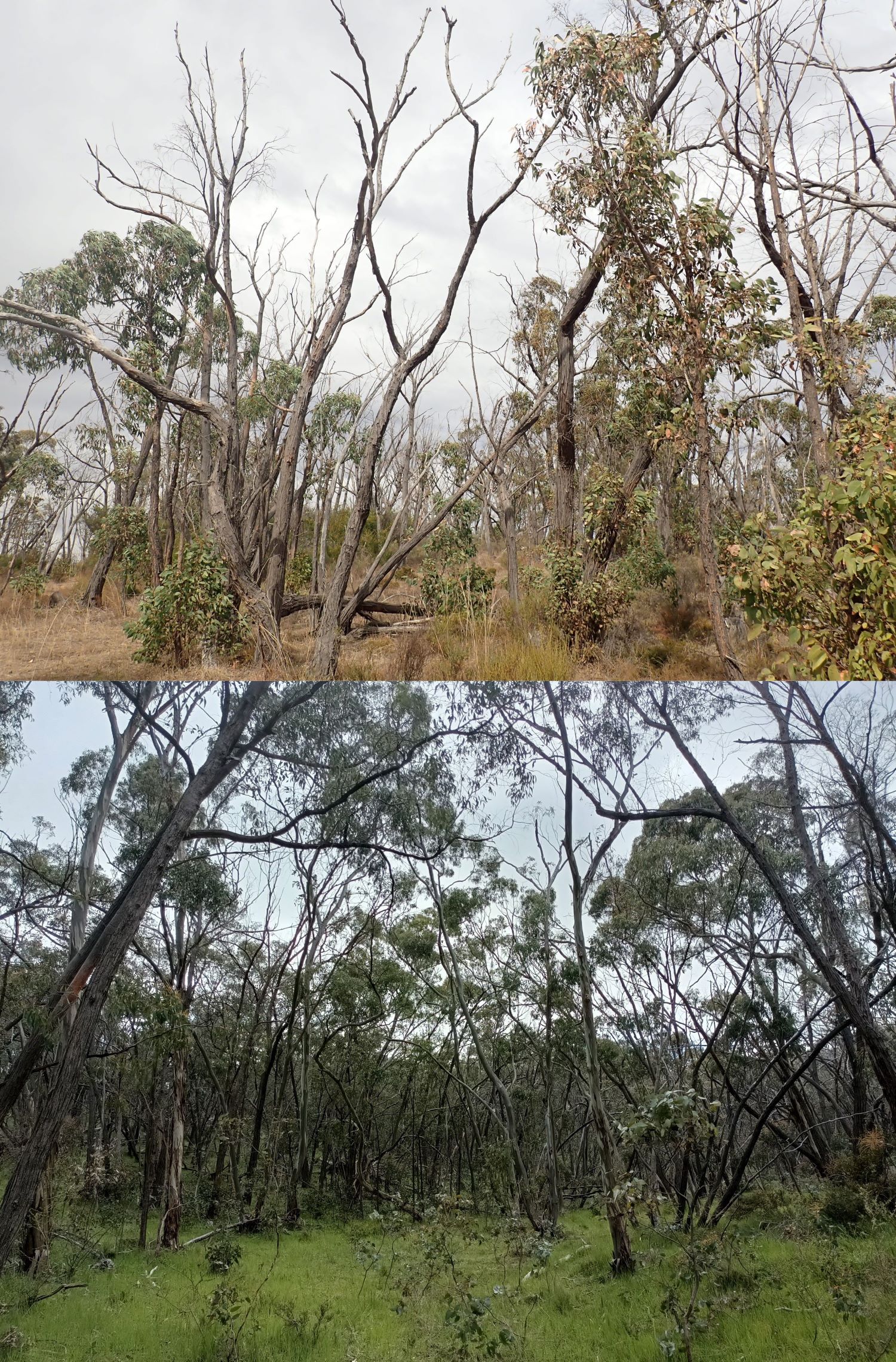18 September 2024

A healthy strand of red stringybarks (above) on a sheltered, pole-facing
slope compared with (top) a stand with severe dieback on an exposed,
equator-facing slope.
A team of international scientists alarmed by the loss of biodiversity across the world due to climate change has proposed a new approach to managing vulnerable landscapes, focusing on sites that are least impacted by changing weather.
Known as climate change-refugia, these places experience weather conditions that are the most favourable for their survival and could hold the key to reducing species extinctions, ecologists say.
In a new paper authored by scientists from Australia, Canada, the United States and Hungary, the researchers have laid out a framework to identify, protect and restore refugia from climate change.
The paper, published in Trends in Ecology & Evolution, calls for an alternative to traditional conservation efforts, which have focused on creating static protected areas.
Conservation biologist and lead author, Associate Professor Gunnar Keppel from the University of South Australia, says the speed and scale at which climate change is progressing demands a new approach.
“Our planet is changing rapidly,” Assoc Prof Keppel says. “Events like the large-scale dieback of trees, mass bleaching of corals on the Great Barrier Reef, unprecedented heatwaves, rapid thawing of glaciers and more frequent fires highlight the potential for major changes in biodiversity and ecosystems.
“The speed and scale of this change is challenging traditional approaches to conservation. For example, traditional protected areas may not shield threatened ecosystems from extreme droughts,” he says.
Instead, vulnerable ecosystems should be assessed along more practical lines to identify the places least impacted by drought stress, for example. It is here that species will have the best chance of resisting climate change, the authors argue.
“However, without support, species in these least impacted places may also struggle to survive as climate change progresses. Support for species could be in various forms, such as providing limited watering to trees in a valley during an extreme drought.
“The degree of management intervention required will depend on how well refugia can resist climate change impacts and on how severely they are affected by other disturbances. Refugia could potentially help to prevent the extinction of numerous species.”
“Managing climate change-change refugia to prevent extinctions” is published in Trends in Ecology and Evolution.
DOI: 10.1016/j.tree.2024.05.002
…………………………………………………………………………………………………………………………
Media contact: Candy Gibson M: +61 434 605 142 E: candy.gibson@unisa.edu.au
Lead researcher: Assoc Prof Gunnar Keppel E: gunnar.keppel@unisa.edu.au




